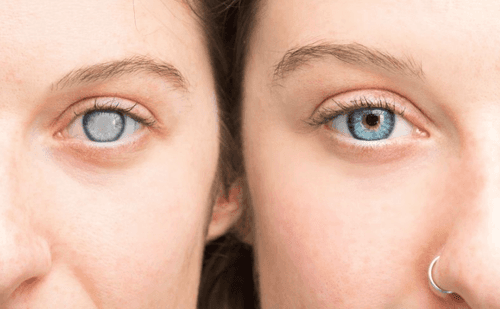


Cataracts are a common eye condition that can significantly affect vision, particularly among older adults. Understanding cataracts, their symptoms, causes, and treatments is crucial for maintaining eye health. This article delves into the intricacies of cataracts, with a special focus on cataract surgery in San Diego. We will explore the cataract surgery procedure, discuss the options for cataract removal surgery, and highlight the importance of choosing a qualified cataract surgeon in San Diego.
A cataract is a clouding of the eye's natural lens, which lies behind the iris and the pupil. This common cataract eye disease affects vision and can develop in one or both eyes. What causes cataracts? Aging, injury, or medical conditions like diabetes can lead to lens clouding. Blurry vision, glare sensitivity, and faded colors are common symptoms of cataracts.
If left untreated, cataract vision worsens, impacting daily activities. Signs of cataracts include difficulty seeing at night and frequent prescription changes. The best treatment for cataracts is surgery. The cataract surgery procedure involves replacing the cloudy lens with an artificial one. Wondering how do you know if you need cataract surgery? Consult an eye specialist. How long does cataract surgery take? Typically, about 15-30 minutes. Cataract surgery recovery is usually quick, with most people resuming normal activities within days.
The symptoms of cataracts can vary depending on the severity of the condition. Common symptoms include:
Several factors can contribute to the development of cataracts:
Cataracts can significantly impact cataracts vision, causing blurred sight and making everyday tasks difficult. The symptoms of cataracts can worsen over time, leading to poor night vision, glare sensitivity, and trouble recognizing faces. Without timely treatment for cataracts, the condition may result in severe visual impairment, affecting overall quality of life.
Cataract surgery is a common and generally safe procedure to remove the cloudy lens and replace it with an artificial one, an Intraocular Lens (IOL). This surgery is typically performed on an outpatient basis, meaning you can go home the same day.
There are two main types of cataract surgery:
Before undergoing cataract surgery, you will have a comprehensive eye examination. This includes measurements of the eye to determine the appropriate power of the IOL. Your cataract surgeon in San Diego will also review your medical history and medications.
On the day of the surgery, you will receive local anesthesia to numb the eye and possibly a sedative to help you relax. The procedure typically takes less than an hour.
After the surgery, you will need to follow specific instructions to ensure proper healing:
Use prescribed eye drops to prevent infection and reduce inflammation.
Selecting a skilled and experienced cataract surgeon in San Diego is crucial for the success of the procedure. A qualified surgeon will not only perform the surgery with precision but also provide comprehensive pre- and post-operative care.
When choosing a cataract surgeon in San Diego, consider the following factors:
After cataract surgery, most patients notice an improvement in their vision within a few days. However, full recovery can take several weeks. It is essential to follow your surgeon's post-operative instructions carefully to ensure optimal results.
Cataract surgery is highly successful, with the vast majority of patients experiencing significantly improved vision. The artificial lens is designed to be permanent and typically does not require replacement. However, some patients may develop a condition called posterior capsule opacification (PCO), which can be treated with a quick laser procedure.
Ans: If you are experiencing symptoms such as blurred vision, difficulty seeing at night, or frequent changes in your eyeglass prescription, you should schedule an eye examination. Your eye doctor can determine if cataracts are affecting your vision and discuss treatment options.
Ans: Cataract surgery is generally not painful. You will receive local anesthesia to numb the eye, and a sedative may be given to help you relax. Some patients experience mild discomfort after the procedure, but this can be managed with medication.
Ans: Most patients notice an improvement in their vision within a few days after surgery. Full recovery typically takes about 4-6 weeks. During this time, it is important to follow your surgeon's post-operative care instructions.
Ans: Cataract surgery is generally safe, but like any surgical procedure, it carries some risks. Potential complications include infection, bleeding, inflammation, and retinal detachment. However, serious complications are rare, and the procedure has a high success rate.
Ans: Once a cataract is removed, it cannot come back. However, some patients may develop posterior capsule opacification (PCO), also known as a secondary cataract. This condition can cause vision to become cloudy again, but it can be easily treated with a quick, painless laser procedure called YAG laser capsulotomy.
In conclusion, cataract surgery is a highly effective treatment for restoring vision lost due to cataracts. With advancements in surgical techniques and technology, the procedure is safe and offers excellent outcomes. If you are experiencing symptoms of cataracts, consulting with a qualified cataract surgeon in San Diego can help you explore your options and take the first step towards clearer vision.

Call Us: (858) 452-3937
8:30AM - 7:00 PM - Monday through Saturday (Saturday until 11:30AM)